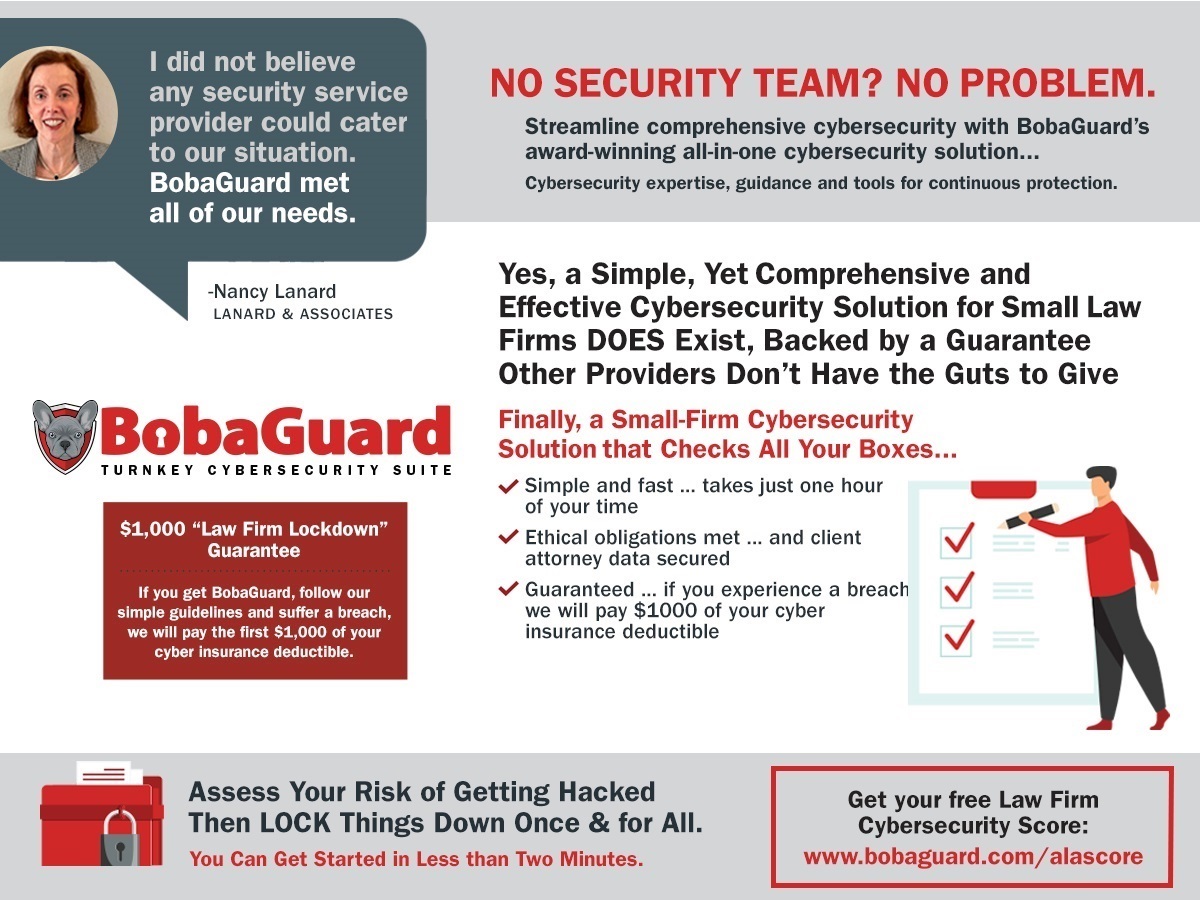Three years later, the pandemic is (mostly) behind us, but the way we work — and the way our people expect to work — has undergone a fundamental shift. Hybrid and remote work arrangements have become the norm, and few seem willing to return to the world of five-day office weeks.
In an informal survey, Law.com recently polled attorneys on their firms’ hybrid work policies and how they felt about them. Most of the more than 350 respondents indicated they would not work at law firms mandating more than three days of in-office attendance. Roughly half said three required days of attendance would negatively impact their decision to stay at a firm.
A September 2022 survey by the American Bar Association (ABA) found that 44% of younger lawyers (those practicing for fewer than 10 years) said they would leave their current jobs for ones that offered greater remote work opportunities. Similar surveys of law firm professional staff indicate a strong preference for hybrid or remote work.
So yes, in many ways, it does seem as though we are going to be doing this forever. As we settle into this new normal, law firms both large and small are now looking to formalize the emergency arrangements created over the past three years and devise workable structures for the future. But as temporary tax and regulatory measures created during the pandemic expire, here are a few pros and cons for the future of remote and hybrid work.
THREE REASONS WHY REMOTE WORK IS GREAT FOR LAW FIRMS
1. Expanding the talent pool in a competitive market.
Even with all the talk of a downturn and layoffs here and there, competition is still strong for experienced attorneys. Embracing remote work lets you look outside of the commuting range of a traditional brick-and-mortar office.
For midsize firms that serve national clients and compete with BigLaw firms for both business and talent, it can be a real bonus to consider talented attorneys living in smaller markets where the competitive salary range can be lower than in the top-tier markets. Expanding recruiting efforts to new markets can also be extremely helpful in recruiting diverse candidates, who remain in high demand as firms look to expand their rosters of attorneys from traditionally underrepresented groups.
2. Meeting the expectations of work-life balance.
Working from home saves Americans 60 million hours of commute time each day, according to an analysis by the Federal Reserve Bank of New York. Even before the pandemic, it was clear that Millennial attorneys and Gen Zs just entering their careers placed a strong value on work-life balance. As well, the added stressors of the pandemic increased attention on mental health and burnout across all generations.
In the most recent ABA survey on women in the legal profession, caretaking commitments were noted as the No. 1 reason (58%) why experienced female attorneys leave law firms. As a law firm leader and a mother of four teenagers, I speak from firsthand experience in saying that the flexibility my firm has offered me in helping to meet the combined demands of work and family has been critical to my success.
But I know that other firms aren’t as accommodating. With women comprising the majority of law school graduates every year since 2014, offering options for remote work will be a key component in recruiting and retaining talent.
3. Reducing overhead costs.
Clients and courts alike have embraced virtual meetings, saving costs on travel, and law firm conference rooms all over the country are quietly gathering dust. Most larger law firms are downsizing office space or abandoning it altogether for remote work and contracts with shared co-working facilities when needed.
“With women comprising the majority of law firm graduates every year since 2014, offering options for remote work will be a key component in recruiting and retaining talent.”
After an initial scramble to provide additional technology support, most firms settled quickly into remote work and were able to function seamlessly. The pandemic taught us that instead of pricey real estate, investing in technology that helps attorneys and staff work efficiently from any location is likely the better investment moving forward.
It can also make it easier to facilitate the movement of groups of attorneys. Our firm recently brought on more than 40 attorneys and staff who are working remotely across 15 states — many in areas where we did not already have a presence. The fact that we didn’t need to put time and resources into building physical office spaces made the decision to move forward much easier and greatly simplified the onboarding process.
THREE REASONS WHY IT’S GOING TO BE HARDER THAN WE THINK
1. Negotiating salaries and pay transparency.
Should you pay a San Francisco salary for someone who will be considered part of your San Francisco office but is working remotely from a less expensive market? For firms that have rigid salary bands, this can be a difficult and sensitive question. And with pay transparency laws popping up in places such as California, Colorado and New York City, this is where remote work can create potential legal hiccups as well.
If you are recruiting an attorney who would work mostly on California-based matters but might be working remotely from another state, are you required to post the salary range during the recruiting process? The laws are tricky here and have not yet been fully tested in the courts, so even law firms may wish to seek outside counsel on this issue.
2. Navigating tax and legal complications.
Hiring remote workers in states where you don’t have a physical presence can be complicated from a tax and legal perspective. What creates a physical nexus for an employer and which tax rules will apply can vary by state and city. Many states (and some cities) created temporary safe havens during the pandemic, but these provisions are rapidly expiring, and businesses are struggling to keep up with addressing a wide range of tax issues and business licensing requirements. Remote work can also create challenges in complying with various state and local employment statutes relating to issues such as overtime and workers’ compensation.
3. Managing relationships and measuring performance and productivity.
For three years, there was a sense that we were all pitching in together to do what needed to be done during a really strange time. Moving forward, law firms that continue with hybrid or remote work need to think carefully about how to manage for optimal productivity, client service and professional development. Setting clear goals and expectations, providing the tools to meet those goals and measuring progress against them is critical across areas including client service, associate development and staff performance evaluations.
The key is to be open and transparent, provide opportunities for feedback and really listen to what your attorneys and staff are saying. Culture is the key. People working from home may feel isolated, and new employees may struggle to connect. Smart firms understand that relationships among colleagues are equally as important as relationships with clients — and are actively creating robust opportunities for interaction and collaboration.
In many ways, the pandemic pushed us in a direction that many of us were heading already. It’s been a bumpy ride, and it’s certainly not over yet. But the past few years have also shown us that when we lead with careful planning, transparency, trust and thoughtful communication, we can innovate and adapt to create firms that will thrive in any environment.


